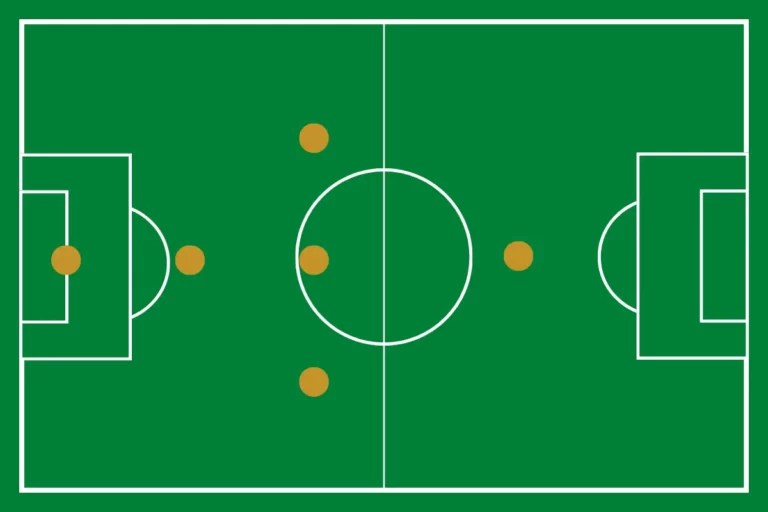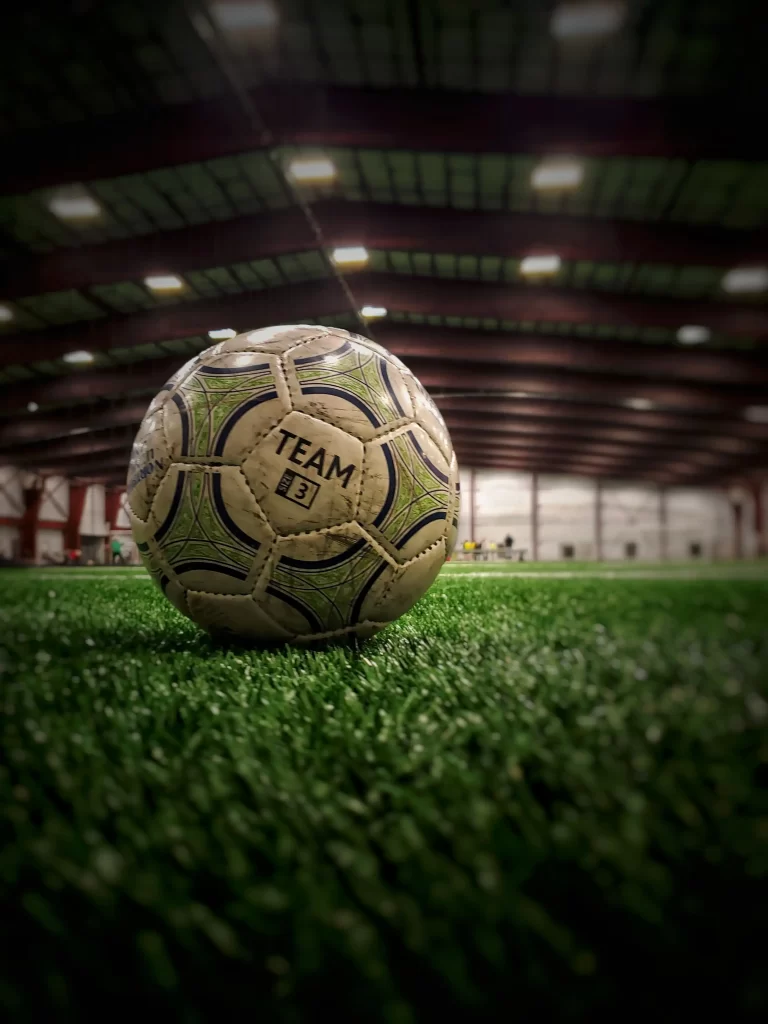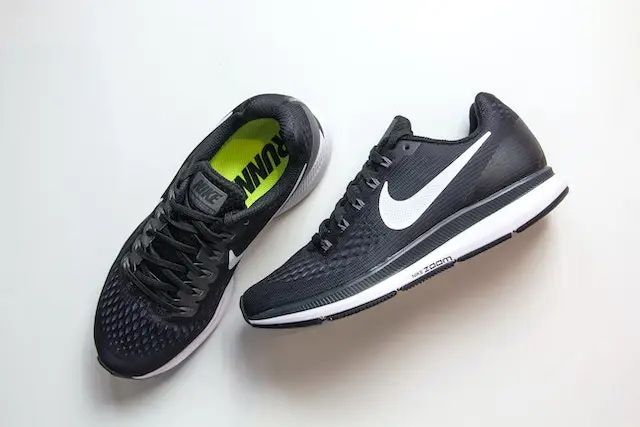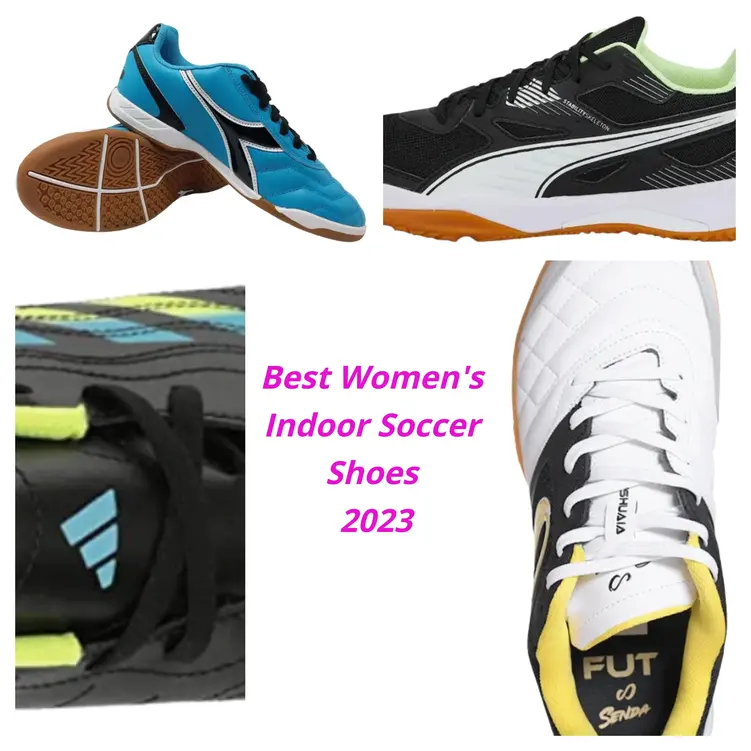What Are Indoor Soccer Shoes? The Ultimate Guide for 2023
If you have never bought a sport-specific shoe before, then choosing one shoe from the huge variety of shoes available these days can be quite intimidating. To make it easier for you to find the best shoe for you, we’ve researched and listed everything you need to know before you go shoe shopping for your indoor soccer shoes.
Here is the simple answer to what are indoor soccer shoes. Since indoor soccer is played on synthetic turf, close-fitted, light-weight, flat shoes with a good rubber base are the most suitable option. Instead of cleats or studs, they should have shallow-patterned rubber soles providing the necessary traction.
For those who like to know the details, read on!
What shoes should I wear for indoor soccer?
Before choosing any kind of shoe, you must know what you need and what options you have. The basic considerations are the same:
Fit – Your shoe should be snug, following the shape of the foot, but it should not be crushingly tight. It is important to remember that shoes take time to adjust. Here’s a detailed article you can read up: How should indoor soccer shoes fit?
Material – Natural leather, synthetic leather or combination. Mesh is also a major part of the shoe, specially in the inner linings.
Traction – Depends on the surface you’re playing on. Gum rubber or simply rubber soles are the best for indoor soccer shoes. Shallow patterns on the outsole help the foot in adhering to the ground better. The grooves should be light and not deep enough to become projections, otherwise the shoes will slip.
Comfort – Most of the focus in indoor soccer shoes is on making sure that the foot is secure inside the shoe and does not slip around. Often low profile cushioning is also present.
Durability – Synthetic leather is the most durable, followed by natural leather. Mesh wears down quickest but is also quite friendly on the feet. Most shoes nowadays use a mix of mesh and either synthetic or natural leather.
You may be thinking if you even need special shoes for indoor soccer. Why not use your sneakers? Or your soccer cleats?
Well, all sports shoes are produced keeping in mind the target surface because different surfaces provide different traction. The type of shoes depends a lot on the playing surface. Some other basic things to consider while choosing a sports shoe are:
- Base(sole) material and shape
- Midsole
- Upper(body) material and design
- Overall design and fit (find out which shoes are best for wide feet)
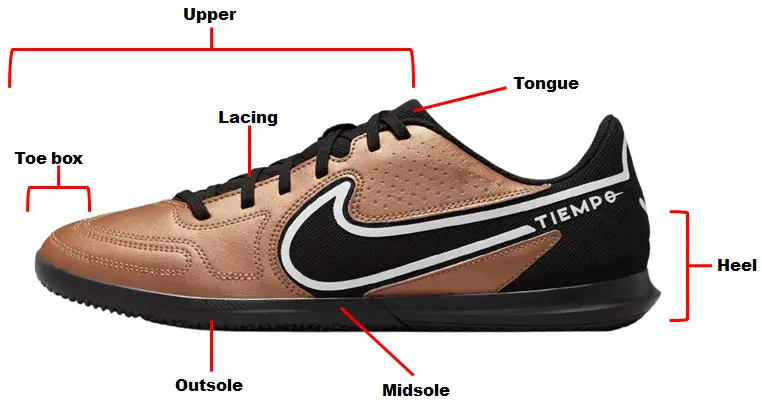
You also need to keep in mind your foot comfort and motion flexibility. Indoor soccer requires a lot of quick turns and efficient ball control. Your shoe should make you swift and agile, while providing a good balance during tight passes.
To find out what are indoor soccer shoes and what to wear for your indoor soccer game, let’s discuss each of these things one by one.
The outsole:
Theoretically, the soul of the shoe. This is what you’ll rely on the most while playing any foot game.
Indoor soccer is played on synthetic carpet turf, which is a grass-like carpet laid down over hard ground. It is less slippery than indoor courts due to the small artificial “grass blades”.
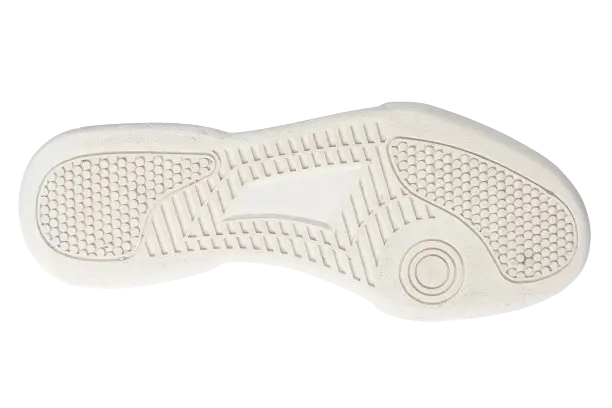
To provide the needed grip on the ground, indoor soccer shoes have gum rubber soles with cuts in them. Shoe manufacturers try to make cut patterns which will maximize the player’s stability. These cuts are not deep enough to turn them into lugs or they will reduce ground contact. Maximum ground contact between shoe and ground is essential, otherwise your chances of slipping increase. This is why indoor soccer shoes are flat soled.
The Midsole
The midsole is the part of the shoe between the outsole and the upper. Its main function is to provide cushioning to the foot. Indoor soccer shoes generally have thin midsoles, because minimal shock absorption is needed. Movement, weight, and control are more important, so the midsoles are left thin.
The Upper
Traditionally, the body of the sports shoe is called the upper. It is only slightly less important than the sole. The body provides comfort, balance, and support to your feet while playing, so the first thing to consider is the material.
There are a lot of options in terms of material and design when choosing the upper.
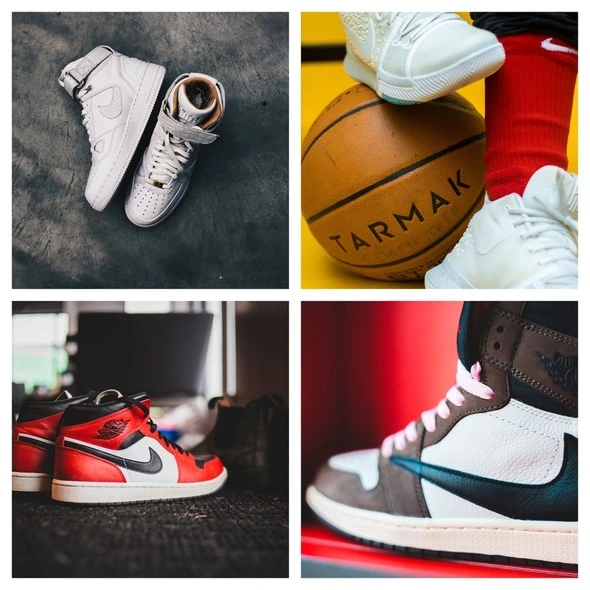
Materials:
Sport shoes can be made of genuine leather or synthetic leather. There are good and bad points for each of these. You can read more about the best materials for indoor soccer shoes in this guide.
- Natural leather is the most comfortable, and gives the best feel because it molds to your feet over time. They are soft, flexible and durable. But leather shoes are expensive, so you might want to consider the other option too. Also, leather shoes are tough to clean. It might not seem that big of a deal now, but after 10 games of running about kicking a ball, the dirt and smudges tend to pile up.
- Synthetic leather is much more affordable (as low as half the price of leather shoes) but less flexible than leather. You need to be careful of the fit from the start because synthetic leather adjust shapes less than leather ones.
Design:
Another option for indoor soccer is a mesh upper. It’s more breathable and therefore more comfortable. It also makes for a very light shoe which can make a big difference in your pace, allowing rapid turns and faster play. Mesh also lets you have more control of the ball because there is less material between your foot and the ball.
Cushioning:
Cushioned uppers will provide more protection but will also cost you in terms of ball control and field manoeuvres. The reason is the added weight. For rapid games, like all kinds of soccer, involving quick passes and sudden turns, the weight of the shoe plays a very important role.
Lacing:
You can choose from front lacing, offset lacing, or no lacing. Some shoes have a flap covering the laced part of your shoe to maximize ball control.
How should indoor soccer shoes fit
Choosing the right design for your indoor soccer shoe is important but equally important is to get the right-sized shoe. By analyzing the reviews of real users, we have put together a sizing guide that helps you determine how your indoor soccer shoe should fit.
There are some things to remember when checking the fit of your shoe:
- Your shoe should be snug and closely-fitted
- Despite the tight fit, there should be some wiggle room for your toes and your heel should settle completely all the way to the base of the shoe.
- Your foot should not slip around inside the shoe.
- If you have wider then average feet, it’s a good idea to choose shoes made of natural leather, because natural leather can stretch and this will help the shoes to accommodate your feet better. Here’s an detailed guide about the best indoor soccer shoes for wide feet.
- The most important thing to know is that all shoes need time to settle around your foot. The best fit will come after wearing them a few times for extended periods of time.
Well-sized indoor soccer shoes close around the foot like a “second skin” and feel like a thicker layer of socks. A good fitting shoe will increase your ball control, and hold your foot stable inside the shoe. Nike has some really good options for close-fitting shoes. Check out indoor soccer shoes by Nike.
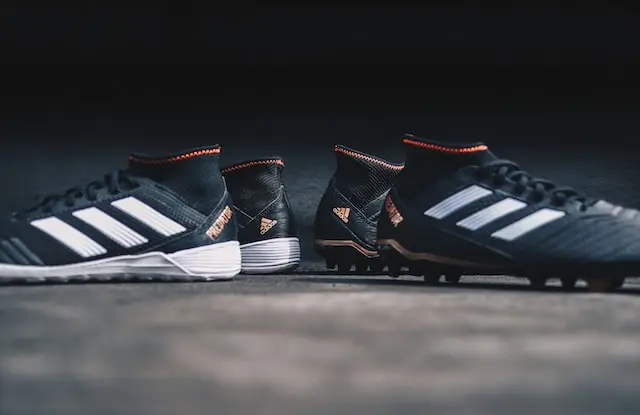
Everyone’s feet are different and shoes are made for the average person. If you have a variant foot shape, you can control some of the fitting by using the lacing systems available in nearly all indoor soccer shoes.
How To Wear Indoor Soccer Shoes
Most mid-level to professional level players invest a lot in buying suitable shoes for their favorite sports, because they know that the right shoes can make a big difference towards gameplay and ultimately towards winning or losing.
However, these specialized shoes also require special care so that they can last longer. By taking the right steps from the beginning you can ensure that indoor soccer shoes help you through more games.
By questioning our athletic friends, we were able to put together some basic guidelines for how to wear indoor soccer shoes for the first time, how to clean them, and how to put them away at the end of a long soccer game and other frequently asked questions.
Caring for Your Indoor Soccer Shoe
Regular care can make your shoes last longer and perform better. Cleaning out the soles can really restore failing grip, and you can add a few months to your shoes’ life if you wipe down with a damp cloth after every game. See how you can care for your shoes:
How to break in indoor soccer shoes
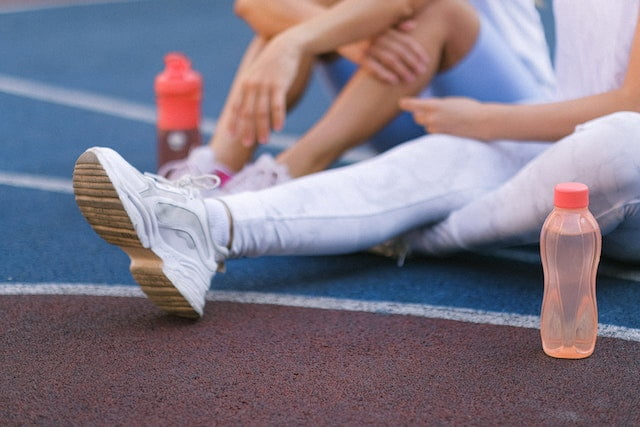
Indoor soccer shoes are traditionally made from natural or synthetic leather. Natural leather is softer and molds more closely to the feet. But it also requires time to break in before it feels good on your feet.
Synthetic leather on the other hand, is slightly tougher and needs little to no break-in time.
That said, you will maximum comfort after spending some time wearing the shoes. Here are a few pointers on how to break in indoor soccer shoes:
- Wear your shoes continuously for a few days (use petroleum jelly in spots that are blister-prone)
- Go easy on the laces in the beginning
- Always use socks
How to stretch indoor soccer shoes
It’s always best to leave the shoes to stretch out naturally by wearing them. It takes two or three days of continuous wearing to feel adequately close, comfortable, and molded.
However, if you want quick results, you can stretch out shoes by soaking them in hot water, then stuffing them with rolled up pieces of paper (newspapers or similar materials) before leaving them to dry.
Using blow dryers set on hot air also helps to expand and stretch out a shoe.
How to get more grip on indoor soccer shoes
Wearing down of shoes is perfectly normal. Depending upon your usage, it may take a few months before you notice that your indoor soccer shoes have started to slip more. Loss of traction can be either because the treads have worn down or because there is a build up of dust and debris in the sole.
If the first, the only thing to do is to change your shoe – you cannot compromise on your foot purchase.
If, however, it is merely dust, all you need to do is give your shoes a thorough cleaning before your next game.
How to clean indoor soccer shoes
Your playing surface can be the best maintained one in the world, and your shoes will still develop dust build up in the soles. It is a good idea to regularly clean out the bottoms (after every game or at least once a week). If your shoes are machine washable, you can just put them in a pillowcase and chuck them in your washer. If, however, you want to avoid risking your shoes, you can always clean them manually by following our guide below.
The easiest way to clean your shoes is to give them a good wipe with a wet towel. This is one way to make your indoor soccer shoe instantly grip better. This is only a temporary solution.
The long term method is to methodically clean your shoe soles. The procedure described below works for shoes made of synthetic materials. It is not recommended for cleaning natural leather shoes.
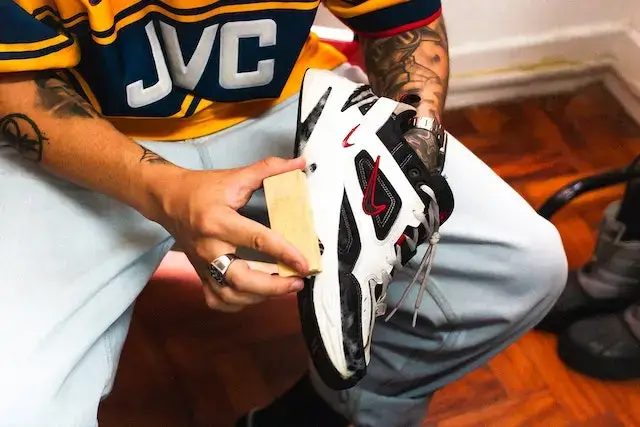
How to Clean Your Indoor Soccer Shoe in 6 Easy Steps
Total time: 10-15 min
Tools / Supplies needed
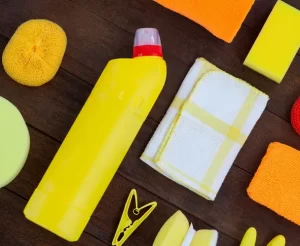
1. Any long, thin, blunt tool / cleaning brush
2. Cleaning rags
3. Cleaning solution (water + any mild liquid detergent)
4. Drying towel
Step 1: Remove Laces
Remove laces, tie them together and put them in the washer with other clothes.
Step 2: Wipe dust
Use a dampened dust rag to gently wipe your shoe all over. Clean out the top and the sole.
Step 3: Clean out the tread patterns
Grab a hard object with a pointy but rounded tip. Use this to remove debris stuck in the grip patterns. Be careful not to use a sharp object that can damage the sole. You can also use a brush to clean out the soles.
Step 4: Soak the soles
Use a mixture of warm water and soap to soak the shoes in order to make the dirt softer and easier to remove. You can either hold the shoes (soles only) in the water for a minute or two. Or you can drape a wet towel soaked in your cleaning solution over the soles for 15-20 minutes.
Step 5: Wipe away the loosened dust
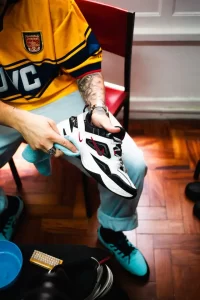
Soaking will have softened the caked dust particles so you can easily wipe them off using a damp rag like before. You can also use a soft sponge or a brush to gently rub the soles.
Step 6: Dry
Thoroughly air dry your shoes before putting them away. Remember damp can kill your shoes.
General FAQs
What are they called? Do indoor soccer shoes have a special name?
Nope. They are called indoor soccer shoes.
Do you need cleats for indoor soccer?
No. In fact, avoid cleats at all costs. The hard studs embedded in the soles damage the thin turf used for indoor soccer. They will also not provide traction on the almost flat surface that indoor soccer is played on. The same studs that increase grip on natural ground will slip on artificial turf.
Are indoor soccer shoes true to size?
According to Nike, they are. However, how the shoe fits depends a lot on the player. Having a tight fit can give you an enhanced feel for the ball, so your play improves. Some players prefer the increase in ball control that they get from a snug shoe and go down half a size.
Why are soccer shoes so narrow?
Why they make indoor soccer shoes so narrow is because they are trying to achieve the perfect fit. Indoor soccer shoe makers often go for a narrower design that closely follows the shape of the foot. This also makes people feel as if they should be using a bigger size. Often the tightness improves after a few games.
If you’re new to indoor soccer and are buying the shoes for the first time, it’s best to buy the same size first and see how your feet feel after 2 or 3 days of playing in them.
Are indoor soccer shoes good for turf?
Yes but indoor soccer shoes do not work as well on turf as proper turf shoes. The artificial grass of turf is small so your indoor soccer shoes will have some grip on the ground but the danger of slipping will be there.
Can indoor soccer shoes be used for running?
Why would you use shoes meant for one thing for something else? Running on natural ground using indoor soccer shoes is not a great idea. The problem here is not grip but cushioning. Indoor soccer shoes are not as well cushioned as running shoes so knees and ankles will be impacted more. There is also no ankle support in indoor soccer shoes, so the risk of turning an ankle is quite high.
Can indoor soccer shoes be used for basketball?
Same answer as for volleyball. There is no ankle support and a bare minimum insole cushion, so they are not suited for long term usage. However, in a pinch you can go for them.
Are indoor soccer shoes needed / necessary?
Yes. Wearing shoes made for the indoor court can significantly improve your play. The special design of Indoor soccer shoes that includes the non marking rubber soles, allow players to have better traction on the floor and prevent injuries from slipping.

